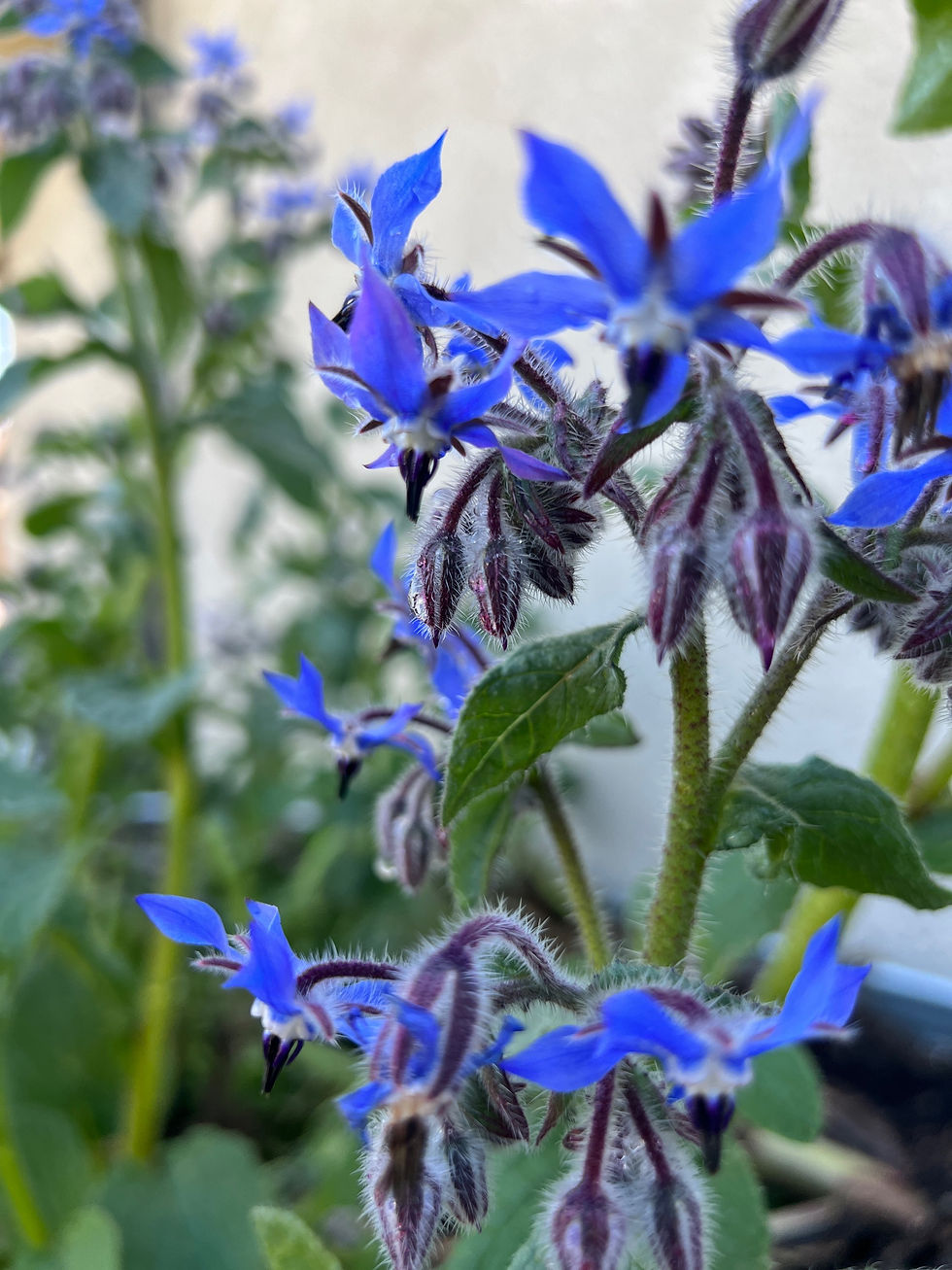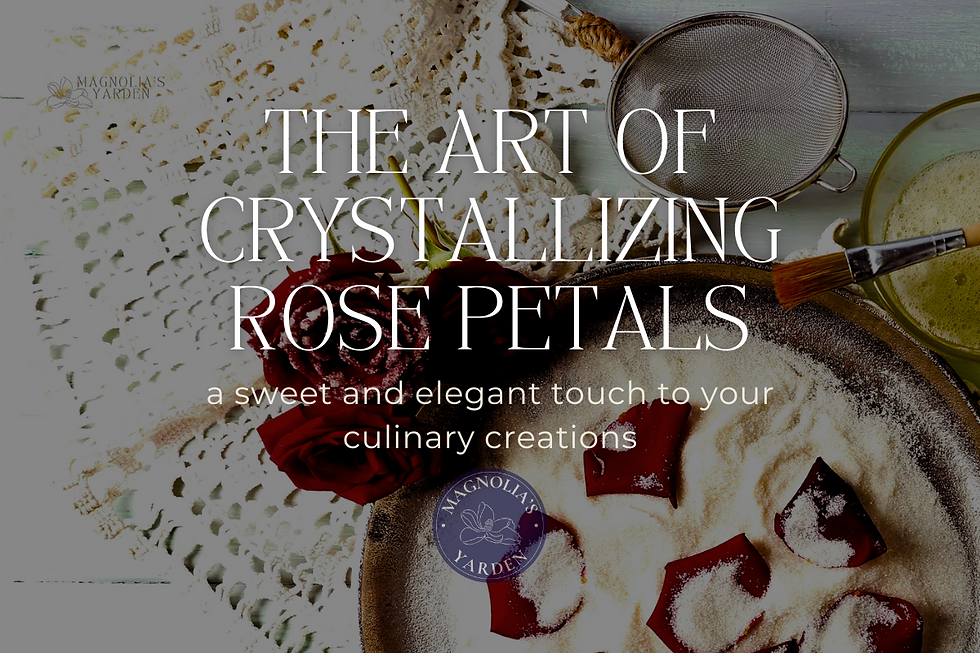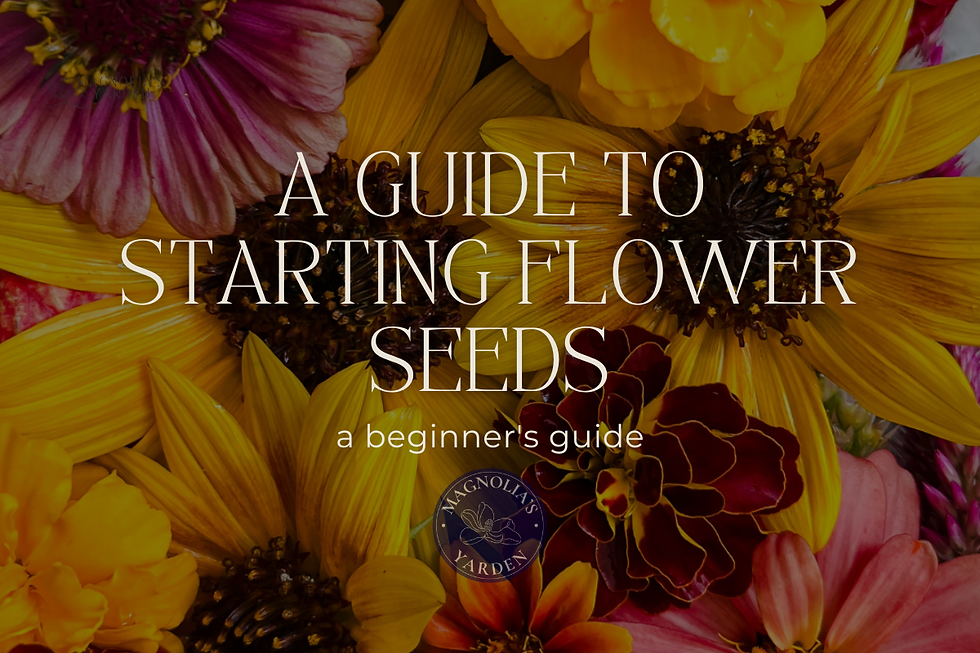Edible Flowers: Borage – A Versatile Beauty for the Garden & Kitchen
- Magnolia's Yarden
- Mar 28, 2023
- 3 min read
Updated: Jul 27
Also known as starflower, borage is the cheerful blue bloom that nourishes pollinators, brightens garden beds, and adds fresh, cucumber-like flavor to your plate.
If you’re looking for an edible flower that’s as lovely in the garden as it is on your dish, let us introduce you to borage. With its periwinkle-blue star-shaped blooms and fuzzy green stems, borage brings a pop of charm to any sunny garden corner. But it doesn’t stop there—this Mediterranean native offers nectar-rich flowers for pollinators and a surprising flavor profile that’s both fresh and mild.
At Magnolia’s Yarden, we adore growing borage for its dual role: it’s hardworking and whimsical. Whether you’re growing from seed or ordering fresh petals from us, this versatile plant makes a happy addition to any edible flower garden.

Why Grow This Edible Flower: Borage
Borage (aka starflower) is a hardy annual herb that’s delightfully low-maintenance. Sow it directly in the garden and it will flourish with little fuss—growing up to 3 feet tall and blooming from mid-spring through early summer. It loves a sunny spot, adapts to most soils (as long as they’re well-draining), and often reseeds itself year after year.
Its soft, fuzzy leaves give it a wildflower charm, and bees absolutely love it. In fact, we often plant it near our other edible flowers to help boost pollination across the garden. Think of borage as both a pollinator magnet and a dinner party guest.
How to Grow Borage
Borage is one of the easiest edible flowers to grow from seed, making it a favorite among both novice and experienced gardeners.
Sow seeds directly into well-drained soil in a sunny location after the last frost, and water gently until they are established. It doesn’t need much fuss—just a little space (12–18 inches apart) and sunshine. Once it blooms, it will continue to produce with regular harvesting, and it often reseeds itself for a surprise encore the following season. Think of it as a generous guest in your garden that shows up with beauty and snacks.
Easy peasy!
The Flavor of Borage

Every part of this plant tells a story—and it’s one you can taste.
The flowers have a crisp, cucumber-like flavor and look beautiful sprinkled over salads, cocktails, lemonades, or frosted cakes.
The young leaves are also edible (though a bit hairy!) and work well in chilled soups or herbed butters.
The seeds are sometimes dried and used as a caper substitute—a nod to borage’s culinary flexibility.
Borage brings both flavor and function, and it’s packed with antioxidants and anti-inflammatory compounds—making it just as good for your body as it is for your garden’s ecosystem.

How to Use Borage Flowers
Need inspiration? Here are a few ways we like to enjoy borage at Magnolia’s Yarden:
Float a single bloom on a spring cocktail or lemonade
Press a flower into shortbread or sugar cookies
Toss fresh petals into green or grain salads for a botanical touch
Infuse into simple syrups for herbal ice cream or sorbet bases
Use as edible confetti for garden gatherings or tea time
Want to Skip the Growing and Get to the Garnishing?
We’ve got you. You can order fresh or pressed borage flowers right from our microfarm—harvested to order and ready to bring garden-fresh elegance to your next culinary creation.
→ Shop Magnolia’s Yarden Gourmet Edible Flowers: Borage
There’s something truly special about a plant that gives so much—beauty, flavor, pollinator support, and a touch of whimsy. Whether you’re a backyard gardener, an adventurous cook, or someone who loves adding natural beauty to your table, borage might just become your new favorite bloom.
Happy cooking with flowers!
~ Danielle
❀ Live your best botanical life from the garden to the kitchen! ❀

Share Your Edible Flower Moments
We love seeing your garden through your eyes. Tag @magnolias_yarden on Instagram or use #YardenInBloom to show us your summer harvest, rose flushes, cut flower arrangements, and shady spots you’re tending with care. We’ll be sharing favorites throughout the season—and might feature yours in our following newsletter!
→ Subscribe to our newsletter for more garden-to-table DIYs, seasonal blooms, and edible flower recipes.
.png)






Comments